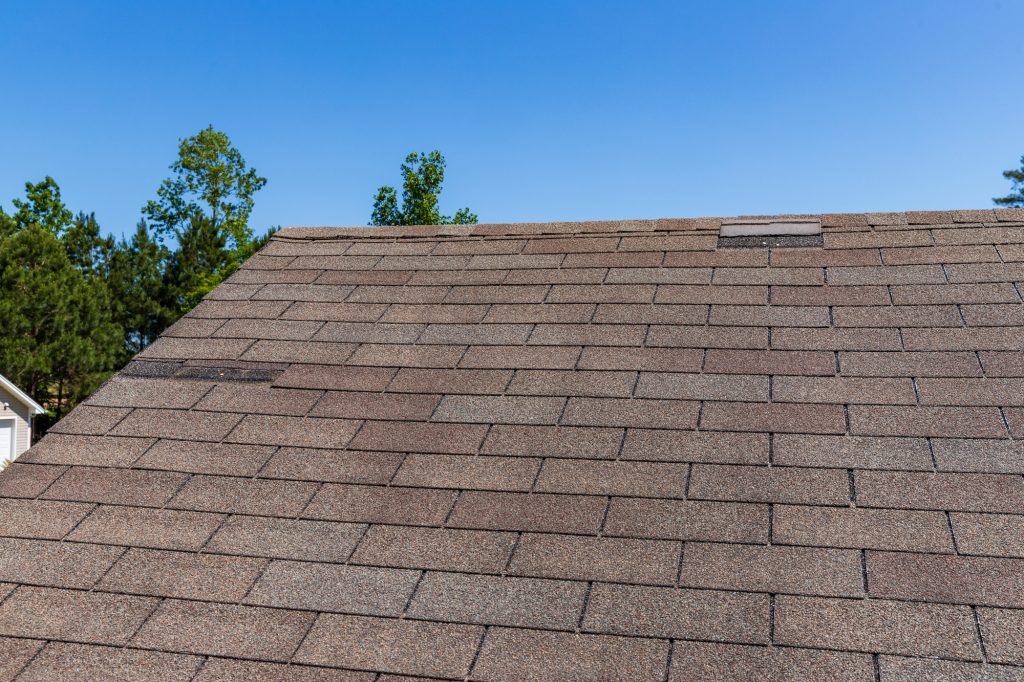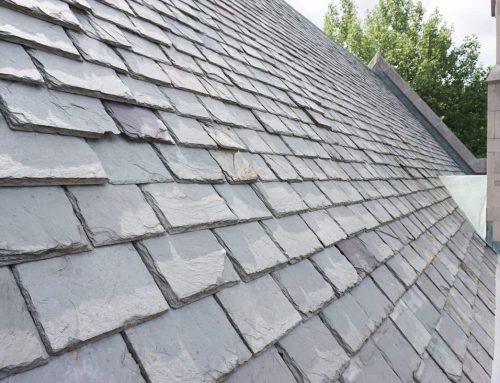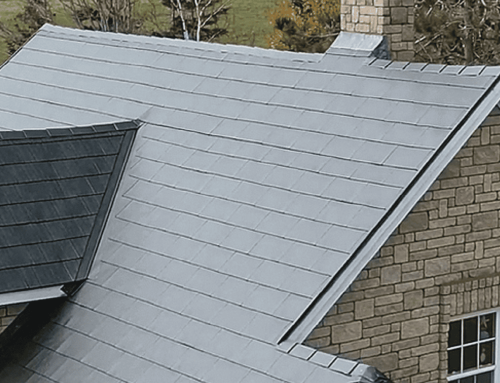Your roof silently endures Toronto’s punishing weather year after year, from bone-chilling winters with heavy snow loads to scorching summers and violent thunderstorms. While this critical barrier protects everything you value most, it doesn’t last forever. Recognizing the warning signs that your roof is approaching the end of its useful life can save you thousands in emergency repairs and protect your home from costly water damage that can spread throughout your property.
Warning Signs Checklist
Immediate Action Required:
- Active leaks or water stains on ceilings
- Missing or severely damaged shingles
- Sagging roof areas or visible structural issues
- Granules filling gutters after storms
- Daylight visible through roof boards
Schedule Professional Inspection:
- Roof age approaching 20+ years
- Curling, cracking, or loose shingles
- Damaged flashing around chimneys or vents
- Ice dam damage from previous winters
- Multiple small repairs needed annually
Monitor Closely:
- Minor granule loss on asphalt shingles
- Slight color variations across roof surface
- Occasional loose or shifted shingles
- Small amounts of debris in gutters
Toronto’s extreme weather conditions accelerate roof aging beyond what homeowners in milder climates experience. Understanding these warning signs—and more importantly, knowing when to act on them—can mean the difference between a planned replacement and an emergency situation that disrupts your life and strains your budget. The key lies in recognizing that multiple minor issues often signal systemic problems that require comprehensive solutions rather than piecemeal repairs.
Age and Material Considerations in Toronto’s Climate
The age of your roof provides the foundation for understanding its remaining lifespan, but Toronto’s harsh climate significantly impacts how different materials perform over time. Unlike homes in temperate regions where roofs might exceed their expected lifespans, Toronto’s freeze-thaw cycles, heavy snow loads, and severe weather events typically reduce longevity across all roofing materials.
Asphalt Shingle Aging Patterns
Asphalt shingles, the most common roofing material in Toronto, show distinct aging patterns that homeowners can readily identify. Three-tab shingles typically begin showing significant wear after 12-15 years in Toronto’s climate, with architectural shingles lasting 18-22 years before requiring replacement. The key indicators include granule loss that exposes the underlying mat, curling edges that create wind-lift vulnerabilities, and brittleness that causes cracking during temperature fluctuations.
Premium asphalt shingles may extend these timelines by 3-5 years, but even the highest-quality materials face challenges from Toronto’s weather extremes. Shingles installed during particularly harsh winters or those that have endured multiple severe hailstorms may show premature aging that accelerates replacement timelines regardless of their chronological age.
Metal Roofing Longevity Factors
Metal roofing systems generally outperform asphalt in Toronto’s climate, but they’re not immune to age-related issues. Steel roofing with quality coatings typically shows minimal wear for 25-35 years, while aluminum systems can last 40-50 years with proper maintenance. However, fastener failure, thermal movement stress, and coating breakdown can create problems well before the metal itself deteriorates.
Expansion and contraction from Toronto’s extreme temperature swings can loosen fasteners over time, creating leak points that may not be immediately obvious. Paint or coating failure allows moisture contact with the underlying metal, potentially leading to corrosion that compromises structural integrity.
Natural Material Considerations
Cedar shingles and shakes face unique challenges in Toronto’s humid summers and wet springs. While properly maintained cedar can last 25-30 years, moisture retention, freeze-thaw cycles, and inadequate ventilation can significantly reduce this lifespan. Signs of cedar roof aging include splitting, warping, moss growth, and black staining that indicates moisture problems.
Natural slate, while extremely durable, can develop problems related to fastener failure, thermal stress, and impact damage from falling ice or debris. Even when the slate tiles themselves remain sound, the supporting infrastructure may require attention after 20-30 years of Toronto weather exposure.

Visible Damage and Wear Indicators
Toronto homeowners can identify many roof problems through careful visual inspection from ground level, though professional assessment remains essential for comprehensive evaluation. Understanding what to look for during different seasons helps homeowners stay ahead of developing problems.
Shingle Condition Assessment
Damaged, missing, or deteriorating shingles represent the most obvious signs that roof replacement may be necessary. In Toronto’s climate, look for shingles with curled edges that no longer lay flat against the roof surface. This curling typically indicates that the shingles have lost their flexibility due to age and repeated temperature cycling.
Cracked or split shingles often result from thermal stress or impact damage from ice, hail, or falling branches common during Toronto storms. While a few damaged shingles might warrant simple repairs, widespread cracking across multiple roof areas suggests systemic aging that requires comprehensive replacement.
Granule loss creates another clear indicator of shingle deterioration. While minimal granule shedding is normal, especially on newer roofs, extensive granule accumulation in gutters after storms or significant bare spots on shingle surfaces indicate advanced aging. Granules protect the underlying asphalt from UV damage, so their loss accelerates deterioration and reduces the roof’s remaining lifespan.
Structural and Flashing Issues
Flashing around chimneys, vent penetrations, and roof valleys often fails before the roofing material itself, creating leak points that can cause extensive damage if not addressed promptly. In Toronto’s climate, where ice dams and thermal cycling stress these connections, flashing problems often indicate broader roofing system issues.
Sagging roof areas, visible from ground level or more apparent from inside the attic, suggest structural problems that may stem from water damage, inadequate support, or excessive snow loading. These issues require immediate professional evaluation, as they pose safety risks and often indicate problems beyond simple surface repairs.
Damaged or deteriorated soffit and fascia boards often accompany roofing problems, as water infiltration affects these components when roof systems fail. Peeling paint, rot, or pest damage in these areas may indicate ongoing moisture problems that suggest roof replacement necessity.
Gutter and Drainage Concerns
Toronto’s heavy precipitation and snow loads make proper drainage crucial for roof longevity. Gutters consistently filled with shingle granules, especially after storms, indicate significant roof wear that may warrant replacement consideration. Similarly, gutters pulling away from fascia boards or showing overflow during moderate rains suggest drainage problems that can accelerate roof deterioration.
Ice dam formation during Toronto winters creates another indicator of potential roofing problems. While ice dams can occur on any roof during severe weather, recurring ice dam problems often indicate inadequate ventilation, insulation issues, or aging roofing materials that allow heat transfer through the roof surface.
Interior Warning Signs and Water Damage
Some of the most critical indicators that your Toronto home needs roof replacement become apparent inside your home rather than through exterior inspection. These interior signs often indicate that roof problems have progressed beyond surface issues to affect your home’s structure and living environment.
Ceiling and Wall Indicators
Water stains on ceilings or walls represent the most obvious interior sign of roof problems, but they may not appear immediately adjacent to the actual leak location. Water can travel along roof decking, rafters, or wall framing before becoming visible, making professional investigation essential for identifying the true source.
Fresh water stains with sharp edges and darker centers indicate active leaks that require immediate attention. Older stains with fuzzy edges and lighter centers suggest past leak problems that may have been temporarily addressed but could indicate ongoing vulnerability. Multiple stains across different areas of your home typically suggest widespread roof deterioration rather than isolated problems.
Peeling paint or wallpaper near ceiling lines often indicates moisture infiltration from roof leaks, even when obvious water stains aren’t visible. This subtle damage may appear months or years after initial water infiltration, making it an important indicator of chronic roofing problems.
Attic Space Assessment
Your attic provides the clearest view of your roof’s condition from the interior. During daylight hours, any visible light penetrating through the roof indicates holes or gaps that allow water infiltration. While small light spots might indicate minor problems, multiple light penetration points suggest systemic roof deterioration.
Moisture or frost buildup in attic spaces during Toronto winters indicates ventilation problems that often accompany aging roof systems. Poor ventilation accelerates roof deterioration and can create ice dam conditions that damage both roofing materials and interior spaces.
Insulation that appears wet, compressed, or discolored often indicates water infiltration from roof leaks. Wet insulation loses its effectiveness and can develop mold problems that affect indoor air quality throughout your home.
Mold and Air Quality Issues
Toronto’s humid climate creates ideal conditions for mold growth when roof leaks introduce moisture into attic spaces or wall cavities. Musty odors, visible mold growth, or unexplained respiratory issues among family members may indicate water infiltration from roofing problems.
Mold problems associated with roof leaks often require extensive remediation that exceeds the cost of roof replacement itself. Addressing roofing problems proactively prevents these health and financial complications while maintaining your home’s indoor air quality.
Energy Efficiency and Performance Issues
An aging roof in Toronto’s extreme climate often manifests problems through increased energy costs and reduced comfort before visible damage becomes apparent. Understanding these performance indicators helps homeowners recognize roof replacement needs before emergency situations develop.
Heating and Cooling Cost Increases
Sudden or gradual increases in heating and cooling costs may indicate that your roof system is no longer providing adequate insulation or weather protection. Toronto’s extreme temperature variations place significant demands on home heating and cooling systems, and roof deterioration can dramatically impact energy efficiency.
Poor roof ventilation, often associated with aging roof systems, forces HVAC systems to work harder to maintain comfortable temperatures. During Toronto’s hot summers, inadequate roof ventilation can create attic temperatures exceeding 60°C, while poor ventilation during winter can cause ice dam formation and heat loss.
Drafts or temperature variations in upper-floor rooms often indicate air infiltration through deteriorated roofing systems. While some air movement is normal, noticeable drafts or difficulty maintaining consistent temperatures may suggest that roof replacement is necessary to restore proper building envelope performance.
Ice Dam Formation Patterns
Recurring ice dam problems during Toronto winters often indicate roofing system issues beyond simple weather severity. While severe winters can cause ice dams on any roof, consistent ice dam formation suggests heat loss through the roof surface that may result from inadequate insulation, poor ventilation, or aging roofing materials that allow thermal transfer.
Ice dams create a cycle of damage that accelerates roof deterioration. The standing water behind ice dams can infiltrate roofing materials, causing rot, mold, and structural damage that extends far beyond the original problem area. Addressing the underlying roofing issues that contribute to ice dam formation often requires comprehensive roof replacement rather than temporary fixes.
Professional Inspection: When and Why It Matters
While homeowners can identify many obvious roofing problems, a professional roof inspection provides the comprehensive assessment necessary for making informed replacement decisions. Toronto’s climate creates complex roofing challenges that require experienced evaluation to understand fully.
Inspection Timing and Frequency
Toronto homeowners should schedule professional roof inspections at least every 3-5 years for roofs under 15 years old, with annual inspections recommended for older roofing systems. Additionally, inspections should occur after severe weather events, including major hailstorms, windstorms, or unusually heavy snow loads that could cause damage not immediately visible from ground level.
Spring inspections, conducted after winter weather has ended but before Toronto’s storm season begins, provide ideal timing for identifying winter damage and preparing for summer weather challenges. Fall inspections help identify problems that should be addressed before winter weather makes repairs difficult or impossible.
Professional Assessment Benefits
Experienced roofing contractors understand how Toronto’s specific climate challenges affect different roofing materials and can identify problems that homeowners might miss. Professional inspection includes evaluation of roof structure, flashing details, ventilation systems, and drainage components that all contribute to overall roof performance.
Professional assessment also provides accurate cost estimates for repairs versus replacement, helping homeowners make informed financial decisions. Contractors familiar with Toronto’s climate can project how identified problems might progress and recommend appropriate timing for replacement based on both current condition and expected deterioration patterns.
Insurance claims for storm damage often require professional documentation to support coverage decisions. Having established relationships with reputable contractors and current inspection records can streamline insurance processes when weather damage occurs.
Making the Right Decision for Your Toronto Home
Determining whether your roof needs replacement involves balancing multiple factors including current condition, expected remaining lifespan, maintenance costs, and your long-term plans for the property. Understanding these considerations helps ensure you make the best decision for your specific situation.
The cost of ongoing repairs often provides a clear indicator that replacement makes more financial sense than continued maintenance. When annual repair costs begin approaching 10-15% of replacement cost, or when multiple repair needs develop simultaneously, replacement typically provides better long-term value.
Consider your timeline for remaining in the home when making replacement decisions. If you plan to sell within 2-3 years, roof replacement may provide marketing benefits that justify the investment. Conversely, if you plan to remain in your home long-term, replacement provides peace of mind and eliminates the ongoing uncertainty of aging roof performance.
Toronto’s competitive real estate market often makes roof condition a significant factor in property value and marketability. Even if your current roof provides adequate protection, its appearance and age may affect buyer perception and negotiating position when you decide to sell.
Protecting Your Home’s Future
Your roof represents one of your home’s most critical protective systems, and recognizing replacement signs early provides the best opportunity for planned, cost-effective solutions. Toronto’s demanding climate makes proactive roof management essential for protecting both your property value and your family’s comfort and safety.
If you’ve noticed any of the warning signs discussed in this guide, or if your roof is approaching the age where replacement consideration becomes prudent, contact Ontario Downspout Service today for a consultation.








